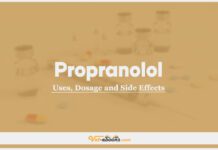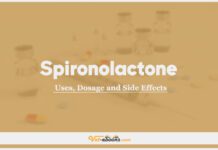Amiodarone for Dogs, Cats, and Horses: Dosage, Uses, and Side Effects Guide
Overview
Potassium-channel blocker, an antiarrhythmic drug with secondary class 2 (beta-blocker), class 4 (calcium-channel blocker), and potent class 1 (sodium-channel blocker) activities.
How Amiodarone Works?
- Prolongs action potential duration and therefore effective refractory period in all cardiac
tissues, including bypass tracts (class 3 action). - Inhibits sodium channels (class 1 action).
- Blocks alpha- and beta-adrenergic receptors (class 2 action).
- Slows the sinus rate.
- Prolongs sinus node recovery time.
- Inhibits AV nodal conduction.
Uses of Amiodarone
- Dogs:
- Treatment of ventricular arrhythmias and supraventricular arrhythmias.
- Effective in ventricular pre-excitation syndromes by prolonging AV nodal and bypass tract refractory periods.
- Used for rate control or conversion to sinus rhythm in dogs with atrial fibrillation, as an adjunct to electrical cardioversion.
- Combined with itraconazole for Trypanosoma cruzi (Chagas disease).
- Horses:
- Treatment of atrial fibrillation, supraventricular tachycardia, or ventricular tachycardia.
- Reported use in cardioversion from atrial fibrillation.
- Cats:
- Limited published information; not commonly used due to toxicity concerns. Use only in rare cases with extreme caution.
- Other species:
- Limited data exists for other species; most applications are extrapolated from dogs, cats, and horses.
Dose of Amiodarone
Dose of Amiodarone In Dogs:
- Oral:
- Loading dose: 10–15 mg/kg p.o. q12h for 7 days.
- Intermediate dose: 5–7.5 mg/kg p.o. q12h for 14 days.
- Maintenance dose: 5–7.5 mg/kg p.o. q24h.
- Monitor serum levels at 3 weeks after therapy initiation.
- Intravenous:
- 0.03–0.05 mg/kg/min continuous rate infusion for cardioversion of atrial fibrillation or sustained supraventricular tachycardia.
- For acute emergencies: 2 mg/kg bolus followed by 0.8 mg/kg/hour continuous rate infusion.
Dose of Amiodarone In Cats:
No Information
Dose of Amiodarone In Horses:
- Oral:
- 5 mg/kg p.o. q24h, typically reserved for long-term management of arrhythmias.
- Intravenous:
- Loading dose: 5 mg/kg/hour IV continuous rate infusion for 1 hour.
- Maintenance dose: 0.83 mg/kg/hour IV continuous rate infusion for 23 hours, then 1.9 mg/kg/hour IV continuous rate infusion for 30 hours.
- Treatment stops when conversion occurs or if adverse effects develop.
Drug Dosage Calculator
You Should Give:
Side Effects of Amiodarone
- Dogs:
- Bradycardia, AV block, and prolongation of the QT interval.
- Gastrointestinal disturbances: anorexia, vomiting, and diarrhea.
- Hepatotoxicity, keratopathy, positive Coombs’ test, and pulmonary fibrosis.
- IV administration risks: injection site pain, hypotension, and hypersensitivity reactions.
- Cats:
- Severe gastrointestinal toxicity and hypersensitivity reactions, including anaphylaxis.
- Horses:
- Hind limb weakness, diarrhea, and elevated bilirubin levels during prolonged IV administration.
Contraindications of Amiodarone
void use in animals with:
- Sinus bradycardia.
- AV block.
- Severe thyroid dysfunction or iodine hypersensitivity.
- Hepatic dysfunction or pre-existing hepatopathy (monitor closely if use is unavoidable).
Some Notes:
- Monitoring:
- Regular ECG monitoring is essential during amiodarone therapy.
- Baseline and periodic evaluation of liver enzymes, thyroid function tests, CBC, and thoracic radiographs.
- For T. cruzi: Monitor therapeutic response with PCR or serology.
- Drug Interactions:
- Drugs increasing amiodarone levels: Cimetidine, azole antifungals.
- Drugs affected by amiodarone: Beta-blockers, calcium-channel blockers, digoxin, lidocaine, methotrexate, and warfarin.
- Increased arrhythmia risk: Antiarrhythmics (procainamide, sotalol), macrolides (azithromycin, erythromycin), fluoroquinolones (moxifloxacin), and opioids (methadone).
- Special considerations:
- Administer IV amiodarone with an in-line filter and a dedicated central venous catheter.
- Use Nexterone® to avoid hypersensitivity reactions associated with polysorbate 80-containing formulations.
Tip
Do You Want To Increase Your Veterinary Knowledge and Practical Skills?
You Can Now Browse and Download +3000 Books For Veterinary Professionals & Students Online.
Download Veterinary Books





















